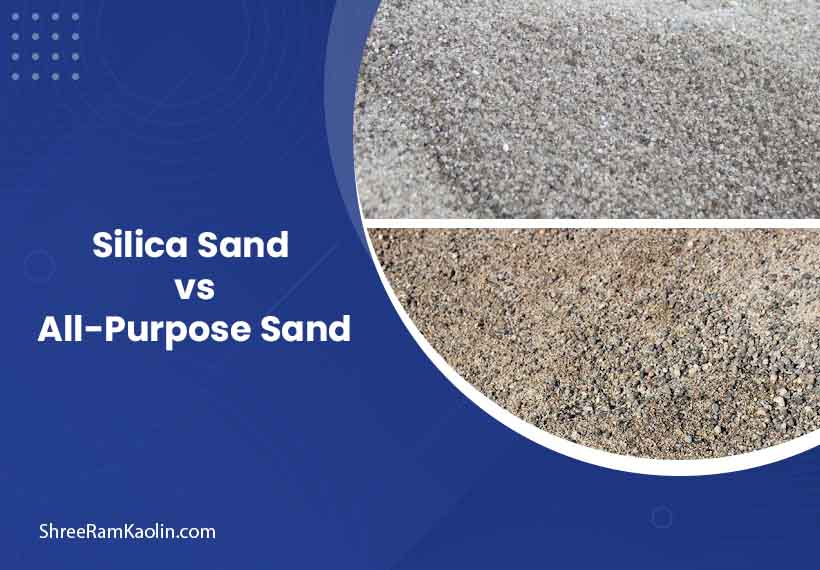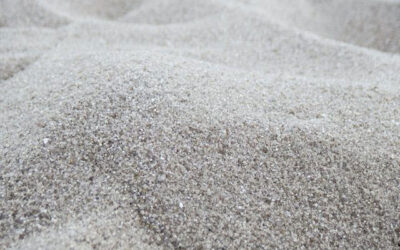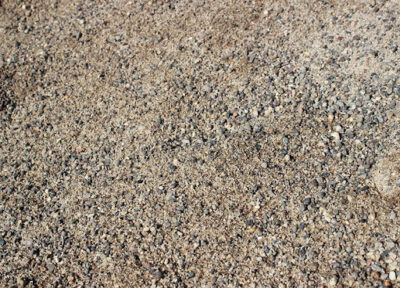Silica Sand vs All-Purpose Sand: Understanding the Key Differences

Selecting the ideal type of sand when beginning any construction, landscaping or DIY project can make all the difference in its outcome. Silica sand and all-purpose sand are two popular choices available to you; we will explore their differences and help guide your choice accordingly. Let’s dive deeper to help make an informed choice!
What is Silica Sand?

Silica sand (commonly referred to as quartz sand) is an ultra-pure form of silica composed primarily of silicon dioxide (SiO2). If you have ever enjoyed soft white beaches with soft, natural-looking sands that feature silica deposits as part of their makeup, chances are it has made itself known!
Composition and Properties of Silica Sand
Silica sand stands out due to its exceptionally high silica content–typically 95% to 99% pure silicon dioxide–giving it unique properties such as:
- Uniform grain size and shape
- Exceptional hardness (7 on the Mohs scale)
- High heat resistance (melting point around 1700°C)
- Chemical stability
- Low moisture absorption
- Excellent drainage capabilities
Silica sand grains tend to be round or sub-angular in shape, limiting their abrasive nature while still offering excellent stability and reliability.
Common Sources of Silica Sand
Silica sand is mined from various geological deposits around the world. The best sources include:
- Quartz sandstone formations
- Weathered granites
- Beach deposits
- River sediments
Once mined, the sand undergoes processing to eliminate impurities and sort grains by size – creating the high-purity product that’s sold commercially.
What is All-Purpose Sand?

All-purpose sand, as its name suggests, is designed for general applications and should typically be the first choice when people simply require “sand.”
Composition and Properties of All-Purpose Sand
Unlike silica sand, all-purpose sand has a more varied composition:
- Contains a mix of different minerals and rock fragments
- Usually includes some silica, but in lower concentrations
- May contain traces of clay, silt, or organic matter
- Grain size and shape can vary significantly
- Generally less processed than specialty sands
The varied composition of all-purpose sand gives it different properties:
- Less uniform grain size
- Typically sharper, more angular grains
- Lower heat resistance
- Variable drainage capabilities
- Often slightly darker in color (tan, brown, or gray rather than white)
Types of All-Purpose Sand
All-purpose sand comes in several varieties, each with slight differences:
- Masonry sand: Screened to remove larger particles, good for mortar and concrete
- Play sand: Washed and screened to remove harmful particles, smoother texture
- Utility sand: Basic sand for general construction, often contains some clay
- Concrete sand: Coarser grade, ideal for concrete mixing
Silica Sand vs All-Purpose Sand
Let’s put these two sand types side by side to better understand their differences.
Physical Differences
The most obvious difference when comparing silica and all-purpose sand is their appearance:
- Color: Silica sand tends to be white or light cream in colour while all-purpose sand ranges in tone from tan to dark brown in hue.
- Texture: Silica sand feels smoother to the touch with more uniform grains, providing a superior experience for users.
- Grain size: Silica sand often features more uniform grain sizes while all-purpose sand tends to vary more widely in texture and consistency.
- Cleanliness: Silica sand is generally cleaner and contains fewer impurities.
Chemical Composition Differences
The chemical makeup of these sands significantly impacts their performance:
- Silica content: Silica sand contains 95-97% SiO2, while all-purpose sand typically only has 70-84% of this material.
- Impurities: All-purpose sand typically contains more minerals and organic material.
- pH level: Silica sand tends to have more neutral pH values while general-purpose sand may contain slight alkalines.
- Reactivity: Silica sand’s high purity renders it less reactive to chemicals.
Cost Comparison
Your budget might influence your choice between these options:
- Silica sand tends to be more costly due to the processing necessary to attain high purity levels.
- All-purpose sand can often be more cost effective when purchased in large volumes.
- Price differences can range anywhere from 30% to 100% depending on quality and source.
- For large projects, cost variations between bids can be significant.
Applications of Silica Sand
Silica sand’s special qualities make it ideal for applications where purity and consistent performance matter most.
Industrial Uses
In industry, silica sand is prized for:
- Glass manufacturing (the primary ingredient in glass)
- Foundry molds and cores
- Abrasive blasting
- Water filtration systems
- Oil and gas recovery (fracking)
- Silicon chip production
Construction Applications
In construction, silica sand excels in:
- High-quality concrete production
- Specialized mortars
- Grout mixes requiring precision
- Pool installation (both as filter medium and for pool surfaces)
- Paver and brick installation
Landscaping and Gardening
For outdoor spaces, silica sand is preferred for:
- Golf course bunkers and greens
- High-end artificial turf infill
- Specialized potting mixes for plants requiring excellent drainage
- Zen gardens and decorative landscaping
- Aquariums and terrariums
Applications of All-Purpose Sand
All-purpose sand shines in its versatility for everyday projects where extreme purity isn’t required.
Construction Uses
In construction, all-purpose sand works well for:
- General concrete work
- Basic mortar mixes
- Paver base layers
- Asphalt mixtures
- Block filling
- Backfilling trenches
Landscaping Applications
In the garden and yard, all-purpose sand is suitable for:
- Soil amendment to improve drainage
- Leveling uneven surfaces
- Base material for patios and walkways
- Sandbox fill (though play sand is often preferred)
- Mixing with topsoil for garden beds
DIY Projects
For the home handyperson, all-purpose sand is great for:
- Homemade concrete crafts
- Sandbags for temporary flood control
- Traction on icy surfaces
- Children’s play areas
- Fire pit installation
Making the Right Choice: When to Use Each Type
Choosing between silica sand and all-purpose sand depends on your project’s specific requirements.
Projects Best Suited for Silica Sand
Consider silica sand when:
- You need extremely consistent performance
- The project requires excellent drainage
- Heat resistance is important
- Chemical stability matters
- You’re working on specialized applications like glass-making or water filtration
- The aesthetic appearance of white sand is desired
- You’re working with specialized plants that require precise soil conditions
Projects Best Suited for All-Purpose Sand
All-purpose sand is your better choice when:
- You’re working on general construction or landscaping
- Budget is a significant concern
- The project doesn’t require extremely precise grain size
- You need large quantities of sand
- The sand will be mixed with other materials
- You’re doing basic DIY projects around the home
- Slight variations in performance won’t impact the final result
Safety Considerations
Working with any type of sand requires care and consideration for safety; silica sand merits special consideration in this regard.
Handling Silica Sand Safely
Silica sand can pose health risks if not handled properly:
- Inhalation of fine silica dust can cause silicosis, a serious lung disease
- Always wear an appropriate respirator when handling dry silica sand.
- When possible, using wet methods is preferred to reduce dust.
- To avoid irritation of the eyes and protect them from irritation, wear eye protection to reduce eyewear-related irritation.
- Follow all OSHA safety regulations when working with crystalline silica.
- Maintain clean work environments to avoid dust accumulation.
- Invest in ventilation solutions in order to minimise dust build-up at work areas
Silica sand can be safe when handled appropriately; just follow all safety protocols like any building material.
Environmental Concerns
Both sand types can have environmental impacts:
- Mining operations can disrupt local ecosystems
- Transportation of sand contributes to carbon emissions
- Runoff from construction sites can impact waterways
- Consider locally sourced options when possible
- Proper disposal of unused sand is important
Where to Buy Quality Sand
Finding the right supplier ensures you get the quality you need for your project.
Sourcing Silica Sand
Quality silica sand can be found at:
- Specialty landscaping suppliers
- Pool supply stores
- Golf course maintenance suppliers
- Industrial material providers
- Some high-end home improvement stores
- Online specialty retailers
Discover high-quality silica sand from Shree Ram Kaolin, perfect for glassmaking, construction, and industrial applications. Our pure, finely processed silica sand ensures superior performance and reliability. Contact us today for premium-grade silica sand solutions!
Finding All-Purpose Sand
All-purpose sand is more widely available:
- Home improvement stores
- Hardware stores
- Landscaping supply yards
- Building material suppliers
- Garden centers
- Bulk material suppliers
Conclusion
Decisions between silica sand and all-purpose sand depend on your project requirements; silica offers superior purity, consistency and performance at a higher cost point while all-purpose offers greater versatility and cost efficiency in general applications where precision is not essential.
Before making your choice, take into consideration factors like budget, application details, safety needs and environmental impacts. All-purpose sand will typically work fine for DIY and general construction projects while silica sand may offer superior performance characteristics requiring precise performance characteristics requiring extra investment.
Any material selected, proper handling and application will help guarantee its long-term durability!

